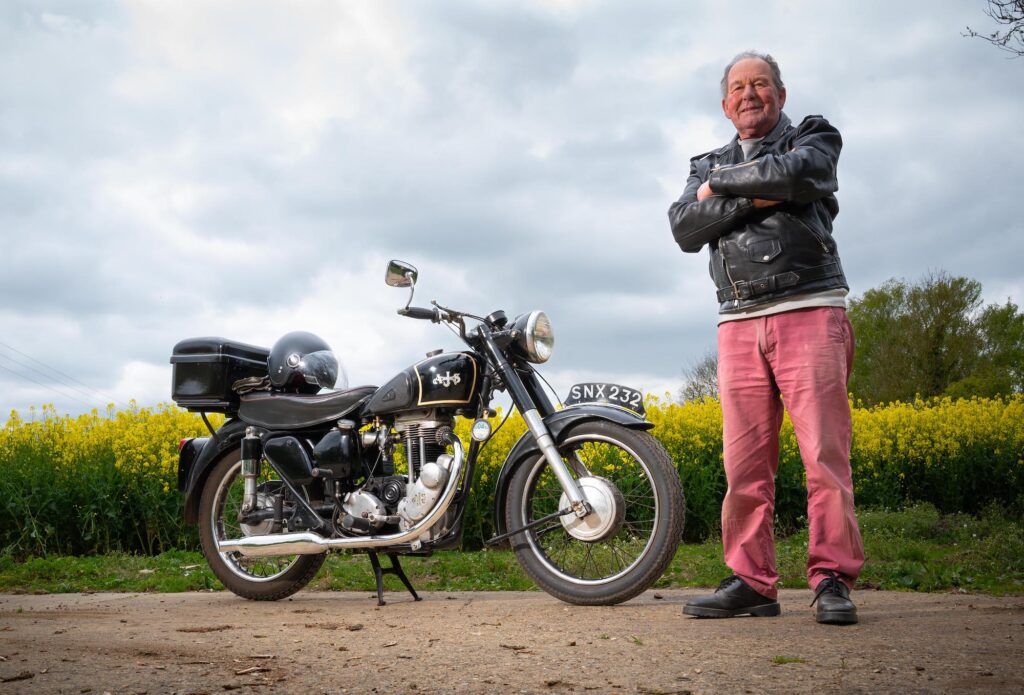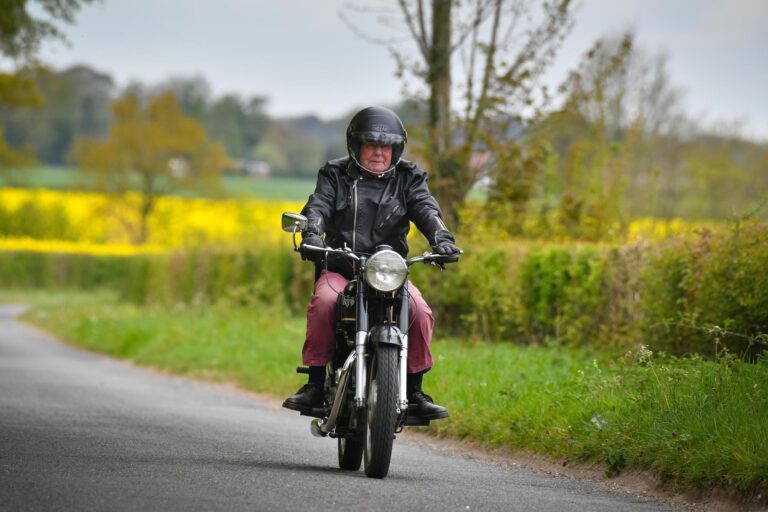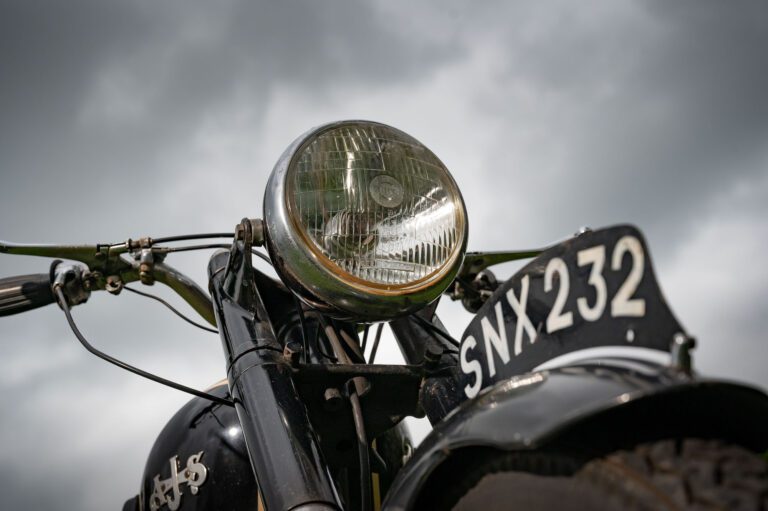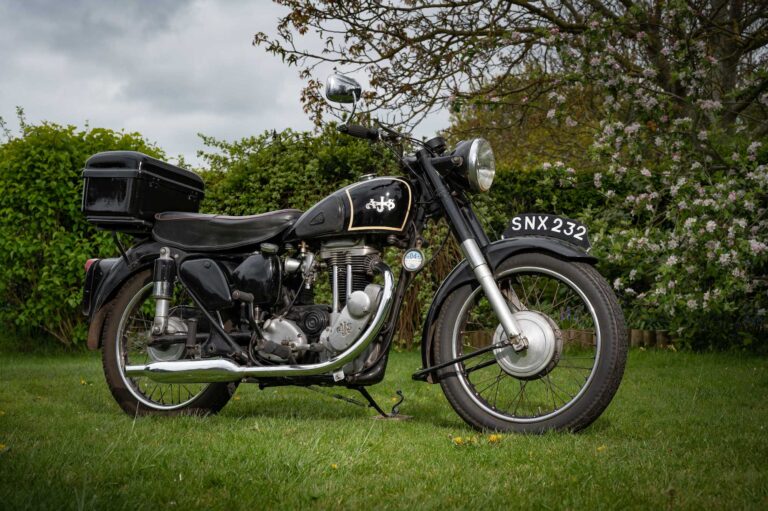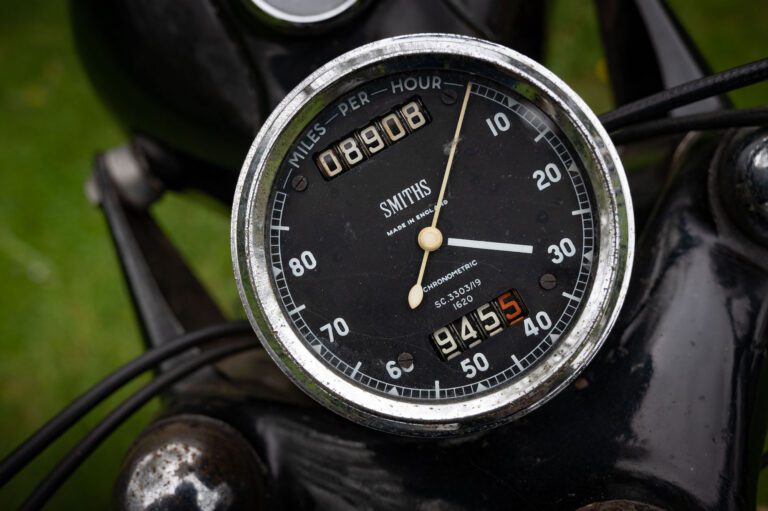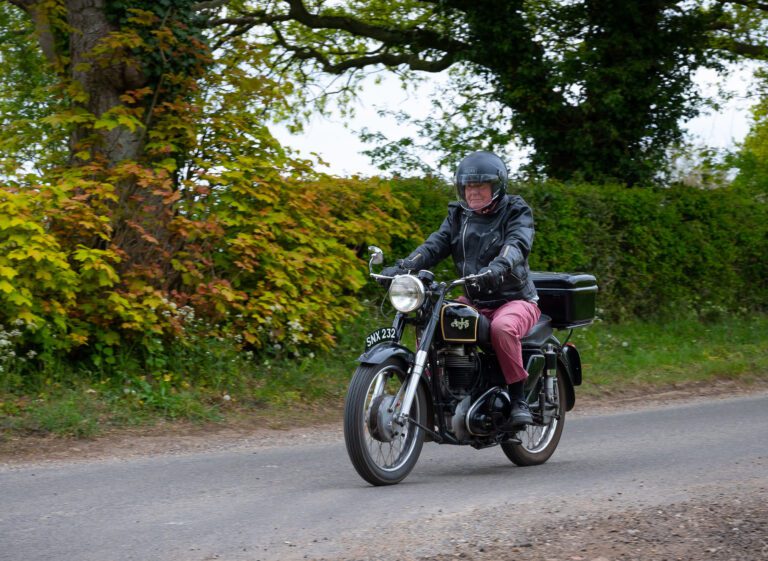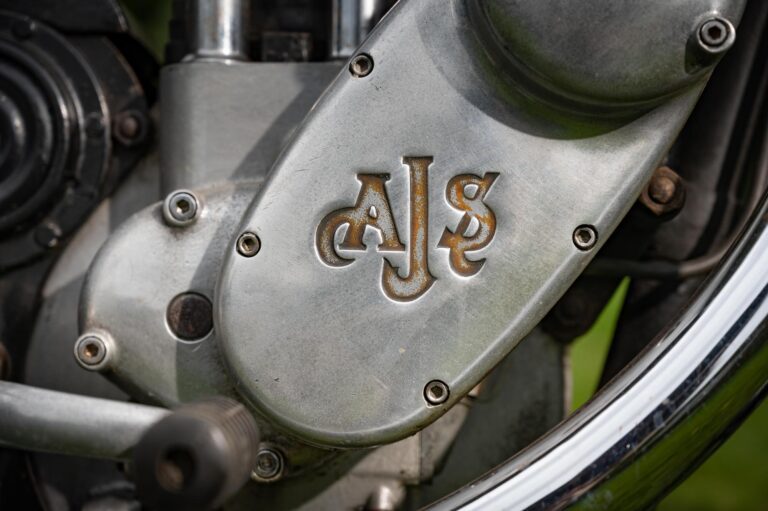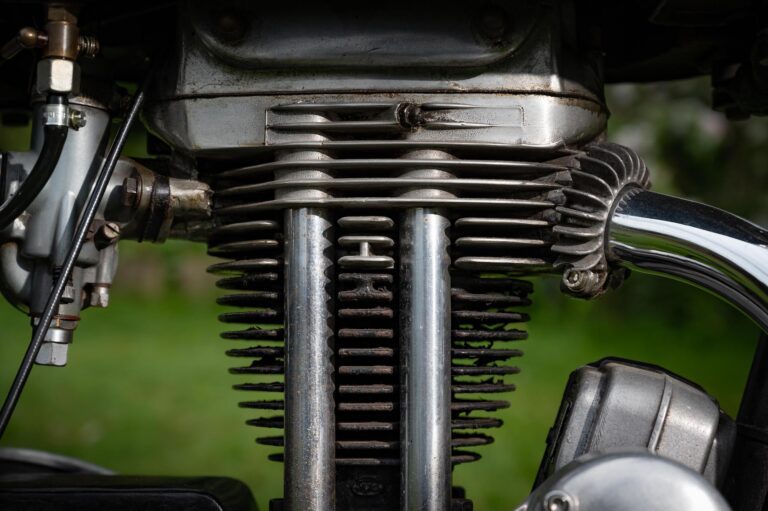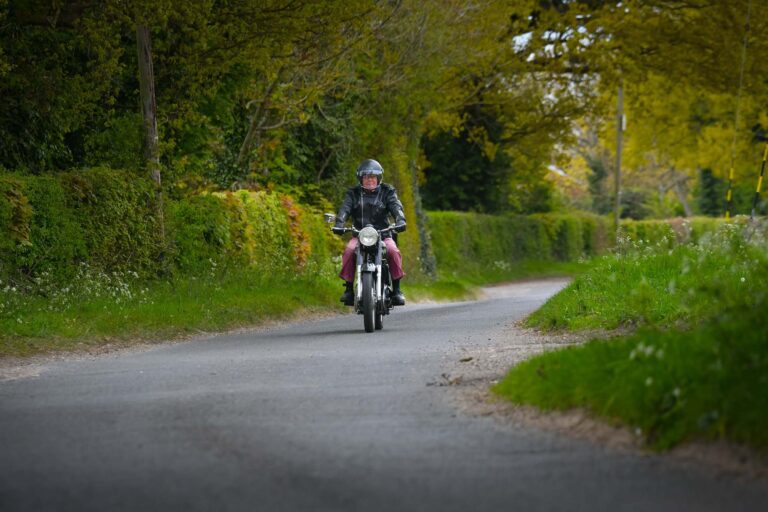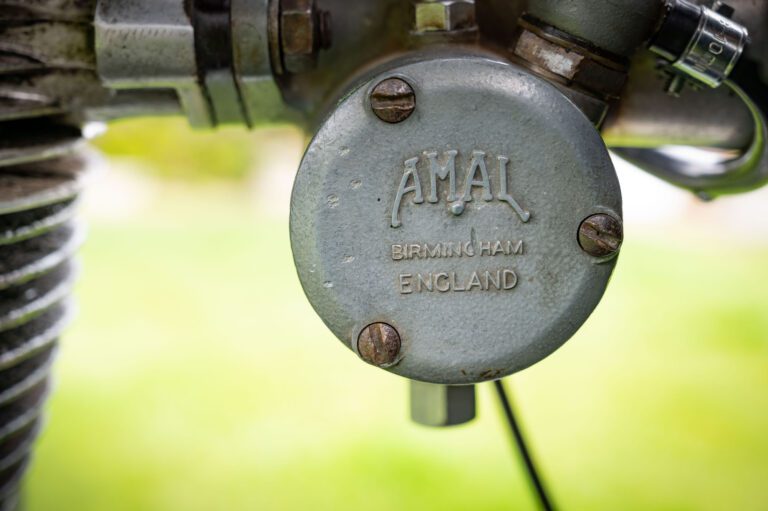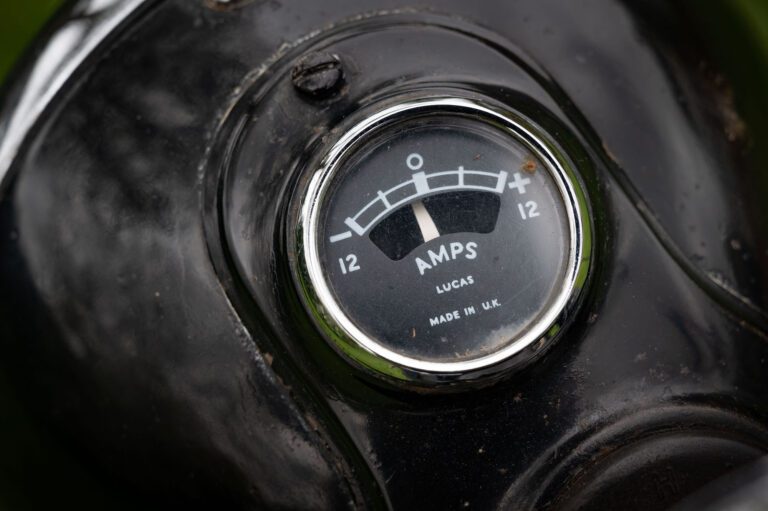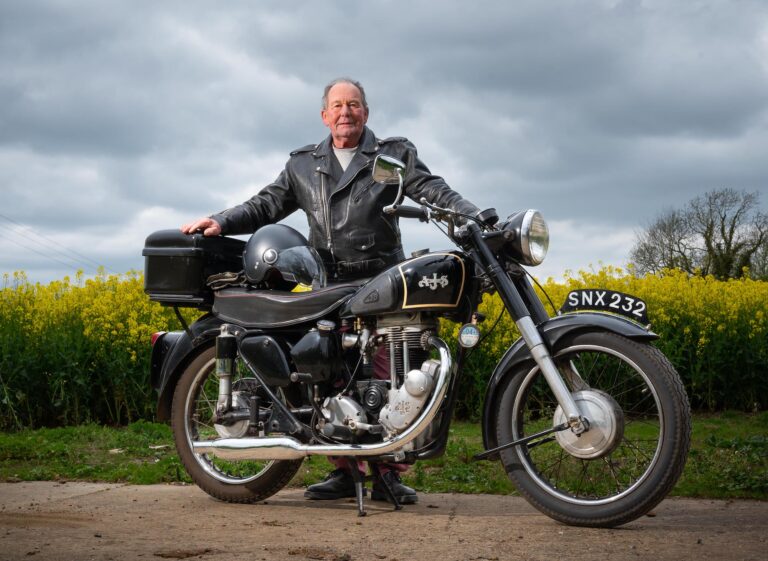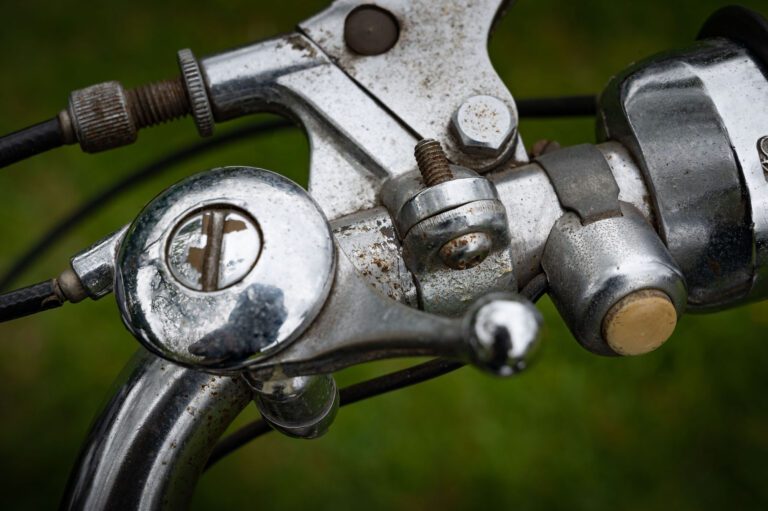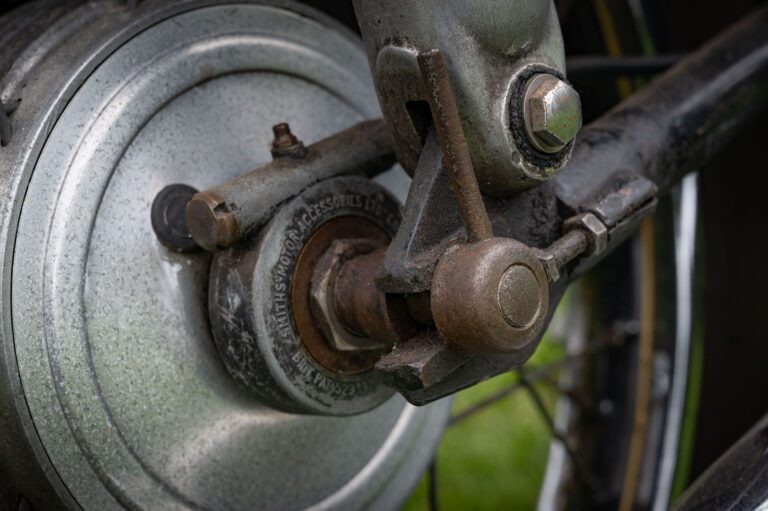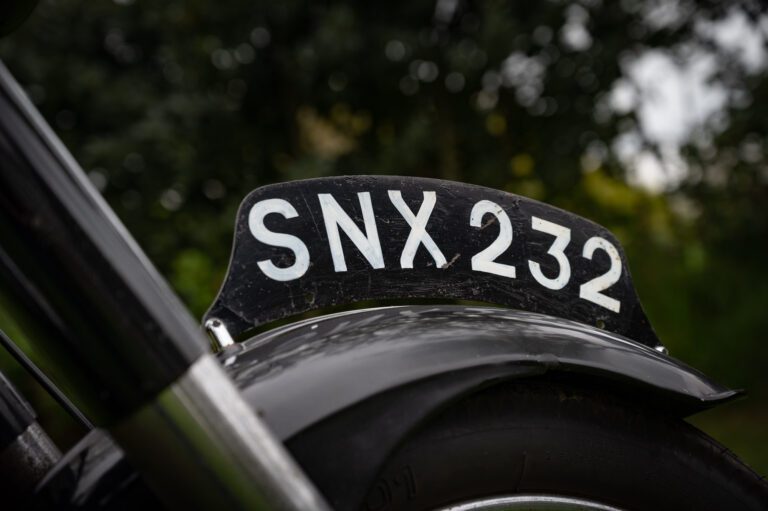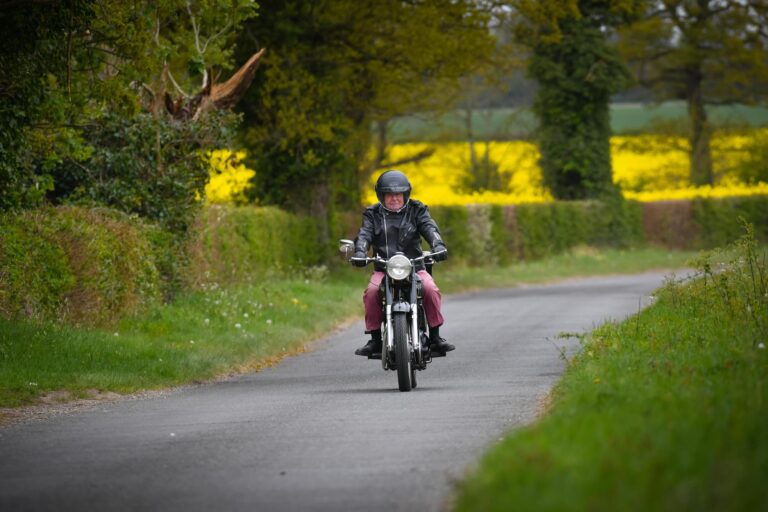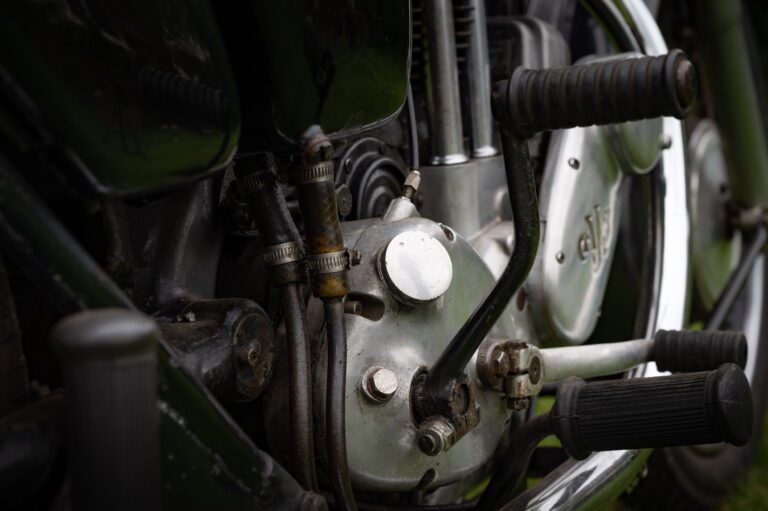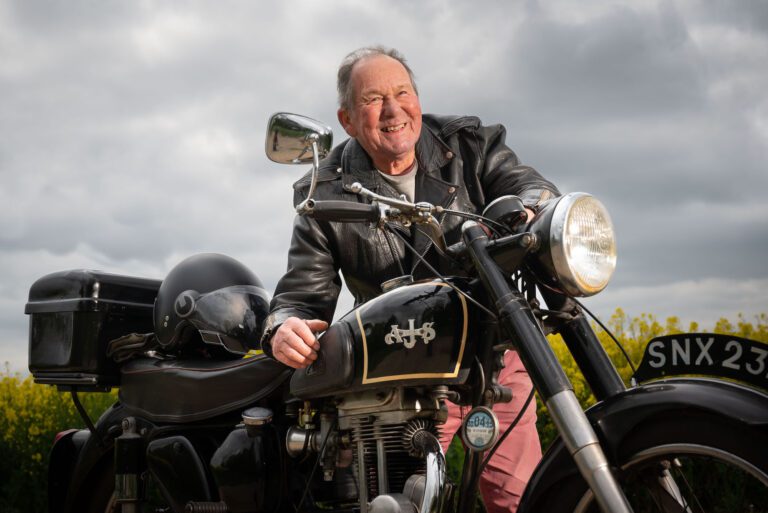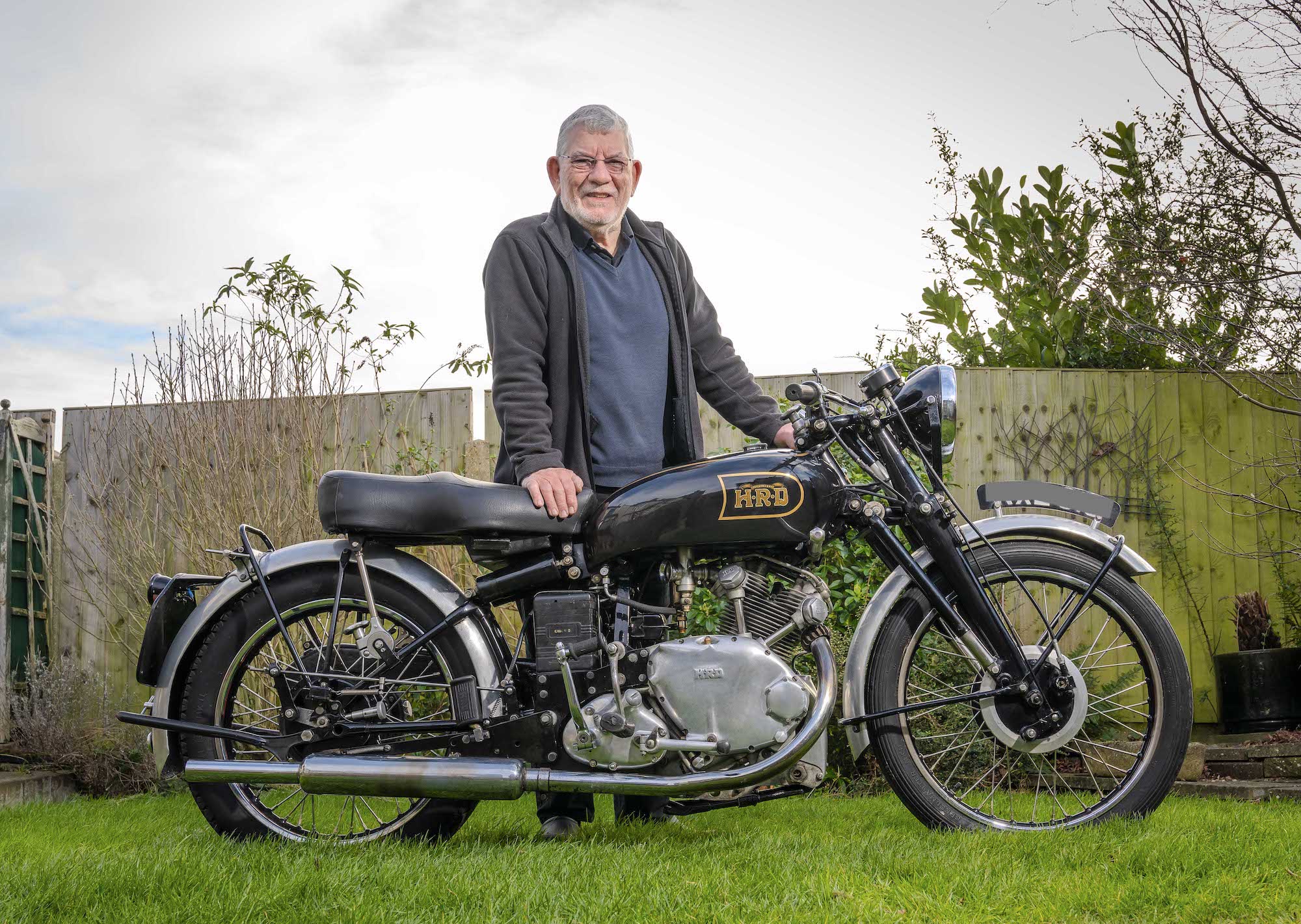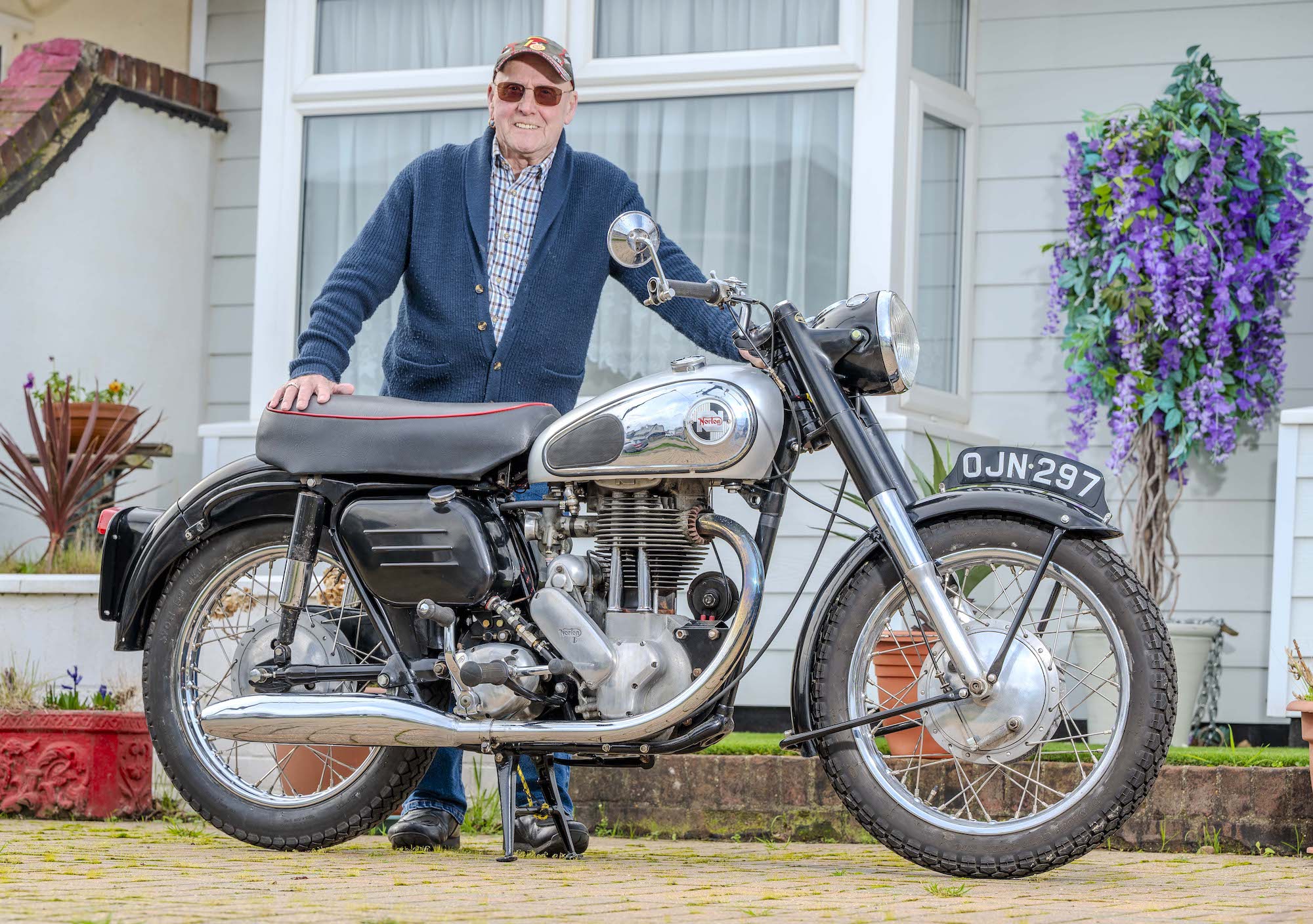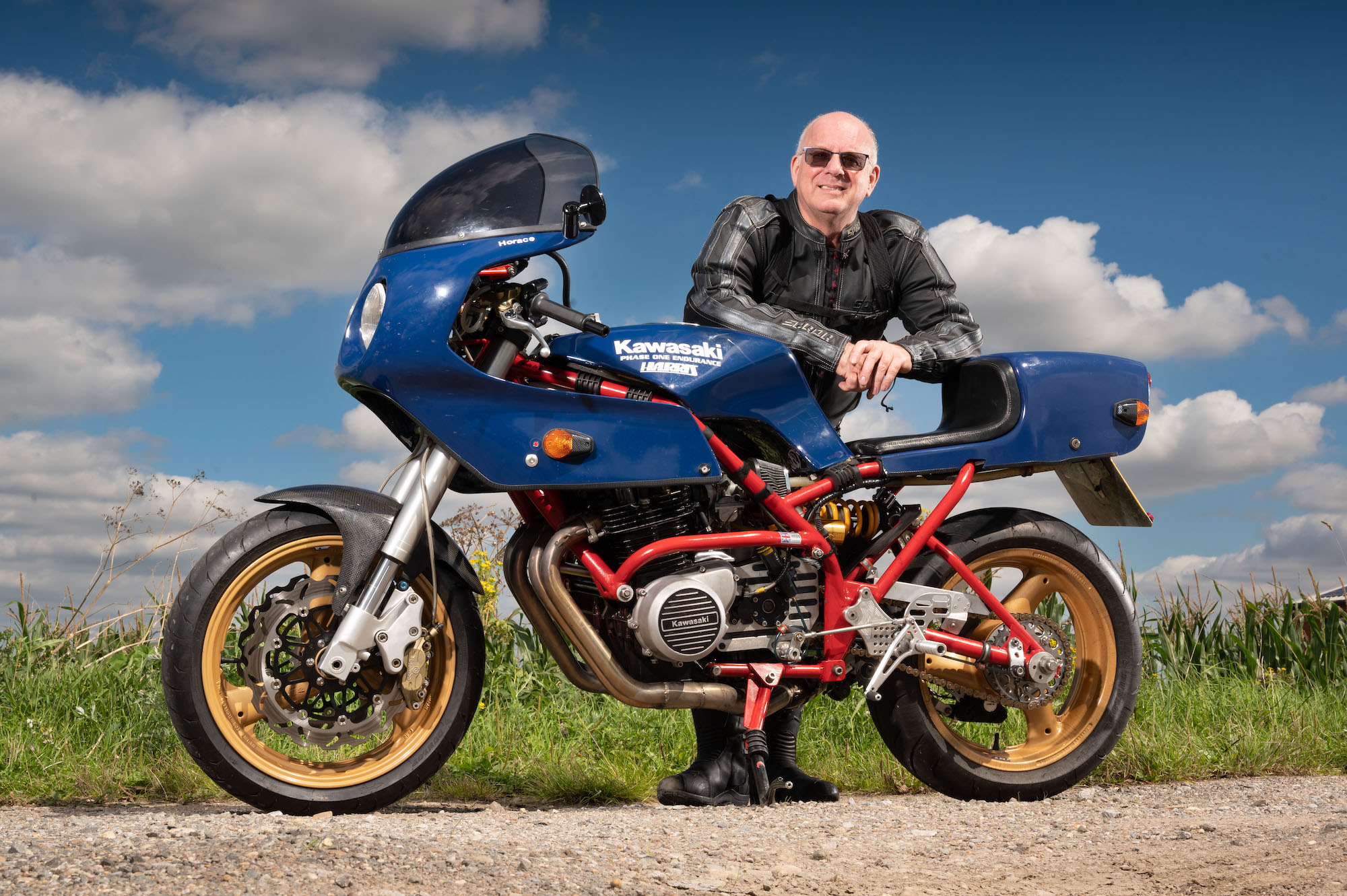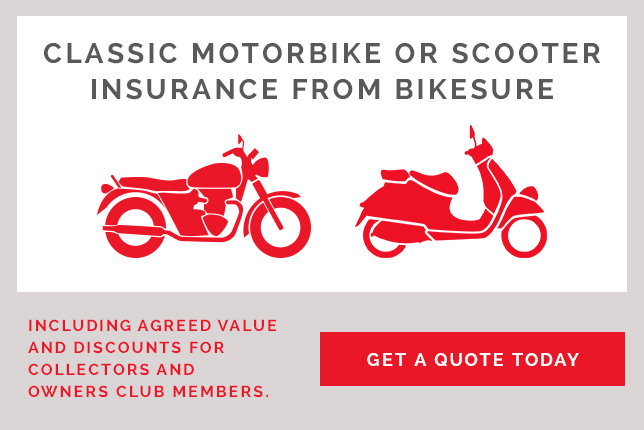There are 13 motorcycles in Eric Eldred’s garage and sheds, not all of them complete, but all there for a reason.
One of them, however, has been there far longer than the rest – the AJS Model 16MS that’s been a part of Eric’s life since his Uncle Tom bought it way back in 1956.
As a boy, he would ride ‘Nellie’ around the garden when nobody was home, a trick his own son Graeme would repeat 30 years later.
At the height of swinging ‘60s, when it was still technically owned by his uncle, he would sometimes ride it with the local rockers to the seaside resorts and cafes around Norfolk.
And despite owning and riding a host of other bikes over the years, the AJS was the one he would use when he wanted to clear his mind and pootle through the countryside.
AJS Model 16 is utterly dependable
It’s not the fastest or most exciting bike Eric could choose to ride but, as befits a motorcycle born from the rugged, wartime Matchless G3/L, it’s proved utterly dependable.
“If I wanted to go out on my own and ride through the villages, it was ideal,” he says. “I didn’t particularly want to go fast, I just wanted to enjoy the moment. It was my machine, and I loved it.”
He still does, and there’s nothing that could persuade him to sell the 350cc single, manufactured by Associated Motorcycles in Plumstead, London, in 1955.
“I couldn’t put a price on it,” he says. “One day, it’s Graeme’s. It’s got to stay in the family, because it’s a family member. He still rides it occasionally and, yes, he’ll keep hold of it.”
Born in Germany when his father was serving in the British Army of the Rhine in the aftermath of the second world war, Eric’s family returned to rural Norfolk, where he first fell in love with motorcycles.
As a teenager, he would accompany the local baker on his bread delivery rounds just to get a ride on his BSA C10 with sidecar.
“One day he turned up in a Reliant three wheeler van,” he says. “I said ‘oh dear, where’s the bike?’ He told me it was broken so, after we’d done the round, I asked him ‘how broken is the bike? Can I have it?’
“He said ‘no, but I’ll sell it to you for 10 shillings’, and we had a deal.”
Eric’s father, a former motorcyclist out of necessity because it was all he could afford to run, wasn’t keen on his son following him onto two wheels.
“He’ll never get it to go”
“He wasn’t pleased, but mother said ‘don’t worry, he’ll never get it to go’,” he laughs. “Well, I did…”
In his early teens, Eric would ride the C10 around the local fields with a group of mates, storing the bikes in a farmer’s barn.
“There was a whole group of us with field bikes, and sometimes we’d go to the barn and bits and pieces had been pinched, but we kept them going,” he says. “They were great days – tearing about on the farmer’s land, on the stubble mainly.
“Eventually it just sort of fizzled out, and I don’t really know what happened to all the bikes. I think the C10 finished up in the local pit.”
By then, Uncle Tom had already bought the AJS, and Eric would ride it while no-one was about, but the first road bike he officially owned was a BSA Bantam, on which he passed his test.
“I took that to pieces to trial it, and it got lost somewhere along the line,” he says.
By now, Eric had left school and briefly worked on a Norfolk pig farm before going into bricklaying.
“I enjoyed engineering, and when I was at school I used to do weekends at a local garage,” he remembers. “I tried hard to get in there, but was unsuccessful, so in the end I worked as an apprentice bricklayer.”
Passion for engineering
Within a few years, however, he fulfilled his passion for engineering by maintaining the lorries in his father’s haulage company, eventually graduating to running his own fleet of trucks.
But back to the AJS, which Eric says “more or less got palmed over to me when I was 16”.
“I rode it when my uncle wasn’t using it for many years before he finally licensed it over to me in about 1970. I didn’t mind because he kept taxing it for me!”
In the early ‘60s, Eric would use the bike to follow the fortunes of the long-defunct Norwich Stars speedway team, travelling to Swindon, Peterborough, and Ipswich with his biker mates.
He also bought a Matchless G9 twin and started to ride with the “Dereham gang…not really a good thing to do, but we had fun”.
“We did what biker gangs do – burn ups, the seaside resorts, local cafes, usually roller skating on a Saturday night, and the occasional run-in with the Mods at Yarmouth.
“I rode the AJS with the pack occasionally, but of course it was a little bit of an outsider with the cafe racers.
Early ’60s was “the best time”
“I’ve always been rather pleased that I was young in that era, because I think it was the best time. People were starting to earn more money, work was regular, things were improving on a daily basis, and it was good fun. I really did enjoy that period.”
Other bikes came and went, including a couple of Triumph Tigers, while Eric increasingly began to pick up bikes in need of repair from other people.
Indeed, after passing his driving test, instead of a car he bought a Morris Commercial van.
“What can you get in a van? A motorbike,” he smiles. “I used to drive the lorry and we had regular customers who you got to know and you’d have a cup of tea with them.
“It always turned to ‘how’s the old motorbike going?’ Sometimes they’d have just bought a Mini or something, and I started bringing them home, much to father’s disgust, because I was still living at home then.
“They slowly accumulated, and I had quite a shed full. If one of the lads wanted a bike, I’d say ‘let’s go home and see if we can sort one out’. So I’d do them up and sell them on. I’ve always had half a dozen bikes or more kicking around.”
Hard to resist an AJS
Many of them were old AJS 16Ms, which Eric found hard to resist.
“It’s such a lovely old bike and when another one like it pops up for sale at the right price, how can you resist it?” he says. “No, you have to buy it. There have been so many 16Ms gone through the garage here it’s unreal. I’ve had AJS club members get fed up with a 350, go and get a 500 or 650, and always end up back on a 350 because they’re much more reliable.”
Eric married his wife, Bridget, in 1970. “She wasn’t overly impressed I had all these bikes, but she would come out on the back of the AJS”.
When son Graeme and daughter Joanne came along, the bikes were necessarily scaled down.
“I had to sort of step away from them a bit, with children to take out, school runs and goodness knows what,” he says. “But once they finished school I went into it again – not intentionally, it just accidentally grew again.
“A hobby that exploded”
“I’m in the AJS and Matchless Club, so anything in the Norfolk area accumulated this way. It was just a hobby that exploded.”
Among the bikes Eric has picked up over the years are an AJS Clubman CSR he’s owned for nearly 20 years, a Triumph Tiger 90, a Matchless G9, a BMW R65, another AJS Model 16MS, and a Chinese AJS bought just to see if they were any good (“I was quite impressed, but now it just sits there…”).
Throughout all of Eric’s collecting, the AJS Model 16 remained, with Graeme taking full advantage like his father had done before him.
“He did the same as me,” says Eric. “I used to come home from work and think ‘that lawn is flat’, and he’d got this out of the shed and gone round on it. ‘No, I haven’t touched it,’ he’d say, but his mother would say ‘he’s been going round the lawn’…”
All of which explains why it’s regarded as part of the family, why Eric has never been able to part with it, and why it will one day go to Graeme.
“I would be riding other bikes, but in between each one I got the AJS back out of the shed to use and, after a couple of kicks, away it used to go,” he says.
Winter wonder
“She’d come out in the winter, which was ideal, because I felt a lot safer on that in snow than on the Tiger 110.
“I never thought about selling it. I suppose it stemmed back from the early days when I couldn’t sell it because it was my uncle’s, not mine!
“After that I never did, mainly because I was buying other motorcycles to tinker with and sell on, and there was always one at hand to sell rather than sell that one.
“I was born and brought up with these British bikes, and have always loved them and stuck with them. It all stemmed back to the ‘60s, the comradeship and the fun. It was an enjoyable time and if you can hang on to that then all well and good.
“Motorcycles were all we could afford, and we made good use of what we had, which made it more interesting.”
While Graeme moved on to Japanese bikes, his father never did.
British character
“Don’t get me wrong, I think some of them are amazing machines, but they don’t have the character of these old British bikes,” he says. “Graeme had an R1, which I did ride, but it frightened me more than I enjoyed it!”
One of the most remarkable things about ‘Nellie’ is that she’s never been restored.
“If it’s been scratched, I’ve filled it in – apart from that, it’s the original paint,” says Eric. “It got a little bit smokey once so it had a rebore and a new piston, a couple or three rear drive chains, and a couple of sets of tyres.
“The dynamo packed up, but I thought ‘do I really need it? No’. So I took it off and bought one of these really expensive 6-Volt batteries. It works the lights, and if I charge that up two or three times a year, it completely does away with the generating side. That’s all that’s been done to it – I’ve never taken the bottom end to pieces.”
Over the past 20 years, ‘Nellie’ has been Eric’s shopping bike (hence the storage box), and the one he chooses to tootle about around the country lanes.
Memories come flooding back
And every time he takes to the road on the bike that’s been a part of his life for more than 60 years, the memories come flooding back.
“They absolutely do, and I’m quite sentimental about it,” he says. “When I go out, all sorts of people of my generation will come and tell me all about how they had one of them.
“This bike has always been there, pushed in and out of the shed when something else like a Norton Dominator has had its sick periods. When I’ve been repairing something else, this bike has meant that in the meantime, I’ve always been mobile.”
Rugged and reliable, the AJS has never let Eric down.
